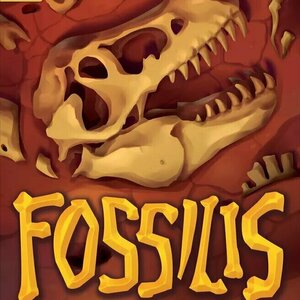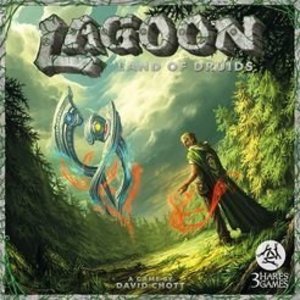Purple Phoenix Games (2266 KP) rated Fossilis in Tabletop Games
Feb 17, 2021
Fossilis is a game of set collection and tile placement in which players are working to excavate and collect sets of dinosaur bones for display in museums across the world. To setup for a game, prepare the dig site as described in the rulebook. Populate the Score Track board with 9 random Skill tokens, 3 face-down randomly selected Event cards, and a Plaster pool based on the player count. Create a Market of Tool and Supply cards, as well as a Dinosaur Display. Each player receives a mat, Paleontologist meeple, and score marker in their chosen color. Pick a starting player, and in reverse turn order, players place their Paleontologists onto a corner tile of the dig site. The game is now ready to begin!
Every players’ turn has 3 steps: Actions, Market, and Lab. At the start of your turn, you have 4 Energy to spend on Actions. The available action choices are: Gain 1 Plaster (from the Plaster pool), Move up to 2 spaces (orthogonally or diagonally), Climb onto the Dig Site (if your Paleontologist was knocked off the board), Place 1 Sand tile (anywhere on the Dig Site), Dig 1 tile (slide a terrain tile 1 space in any direction), or Extract (excavate a bone/hammer). With the exception of Digging, all other Actions cost 1 Energy to perform. Digging 1 tile costs energy dependent on the type of terrain tile being moved. To dig Sand is 1 Energy, Clay is 2, and Stone is 3. To Dig, you select 1 tile that is orthogonally adjacent to your Paleontologist, and slide it 1 space in any direction you wish. Tiles that are pushed off the edge are claimed by that player, and can be used to purchase cards from the Market. It is possible for a Paleontologist to be pushed off the Dig Site, so watch out! To perform the Extract action, you will excavate a bone or hammer from an open pit orthogonally adjacent to your Paleontologist. Extraction costs Plaster dependent on the type of bone being collected. For example, extracting a tooth costs 2 Plaster, while a skull costs 6. Extracting hammers has no cost, and you immediately trade the hammer for one of the available Skill tokens in play. The Skill tokens provide benefits for the remainder of the game. Once a player has spent their Energy, they move to the next phase.
On your turn, you may buy 1 card from the Market: either a Tool or Supply card. These are purchased using the icons on any tiles you collected during the Action phase. Supply cards gain you immediate resources, while Tool cards are saved for use during a future Action step. After the Market phase is the Lab phase. You may claim a Dinosaur from the Display if you have at least one of the required bones for that Dinosaur. You can only ever have 1 Dinosaur in your Lab at a time, so strategize carefully. At any point during a turn, you can score the Dinosaur in your lab – either for full points if all required bones are present on the card, or partial points if you only have some of the required bones.
Events are triggered 3 times throughout the game when the Plaster pool has been depleted. The active player draws the top Event card, and follows the instructions on the card. Once an Event has been performed, the Plaster pool is refilled and play continues with the next player. After the 3rd event has been triggered, the Plaster pool is refilled one last time. When the last Plaster pool is depleted for this final time, the game ends. Players count up all their points, and the player with the highest score wins!
At first it may seem overwhelming, like there is a lot going on, but after a couple of turns the gameplay feels intuitive and streamlined. There are quite a few aspects to keep track of, but the overall flow of the game makes it feel clear and concise. During my plays, I have never once felt lost or confused as to what the next turn step is. The tight gameplay also lends itself to providing a variety of strategic options for players. Do you want to go for all the highest-scoring Dinosaurs, even though their bones take longer to collect? Or maybe you want to snag as many lower-scoring Dinosaurs as possible, since they should be faster to collect. You can earn end-game points based on Characteristic sets of Dinosaurs (carnivorous, herbivore, etc), so maybe you decide to focus on those sets. Or if you’re in a particularly confrontational mood, maybe you want to knock opposing Paleontologists off the Dig Site, causing them to ‘waste’ an Energy on a future turn just to climb back on into the play area. There really is no right answer as to what strategy is a sure-win, and I like that I can choose and adapt my strategies based on the current standings in the game.
Probably my favorite innovative mechanic in Fossilis is the 3D terrain and ‘digging’ actions. When setting up the game, bones and hammers are randomly scattered and distributed around the Dig Site before terrain tiles are added. So there is absolutely no way to know where you should dig for what you want! Just like a real paleontologist, you’ve got to give it your best guess. I have had some frustrating turns, spending lots of Energy to dig a tile just to find the space to be empty! Or maybe you dig and hit the motherlode, which just means you’ll probably have to fight off other paleontologists for the bones that you need. The 3D board adds another element of strategy that heightens the gameplay and makes it more immersive.
Let’s touch on components for a moment. They are AWESOME. Admittedly, I have the Kickstarter version, but I just love how well-produced this game is. The terrain tiles are nice and thick bakelite-esque tiles, and they are just dang fun to manipulate. The plaster and bones are small, but pretty detailed and sturdy for their size. The artwork on the cards is colorful and clear, the Paleontologist meeples are cute little wooden bits, and the cardboard bits are all good quality. Excellent production quality all around.
It should come as no surprise, based on my score, that I love this game. The gameplay is immersive and engaging, the mechanics add a neat twist to your normal set collection/tile placement game, and the ability to adapt strategy on the fly means that nobody is truly out of the game because of one bad turn. Purple Phoenix Games gives Fossilis a roaring 11 / 12. If you’re looking for a good dinosaur game, look no further. Yeah, they’re technically just bones here, but it still counts!
Purple Phoenix Games (2266 KP) rated Lagoon: Land of Druids in Tabletop Games
Jun 12, 2019
Lagoon is a land of harmony and balance. Or at least it WAS until the rise of humanity. The three spiritual energies that once existed in a perfect equilibrium are now fighting for dominance and control over the destiny of Lagoon. Each energy has amassed a following of druids who are working to ensure that their chosen energy is victorious! Which energy will you choose to serve, and will your choice be the correct one in the end? There’s only one way to find out!
Lagoon: Land of the Druids is a game of tile placement and exploration. You are the leader of a circle of druids, and they will do your bidding throughout the game. On your turn, you will take any/all of these five actions: Move, Summon (add one of your reserve druids to the play area), Explore (add a new site tile to the table), Invoke (use a Site Action), or Unravel (remove a site tile from play). You can perform as many of these actions as you want, as long as you have the appropriate resources to spend. Each tile in the game is double-sided, and each side has a unique action/ability associated with it. Strategy is everything – which tile side should you choose to bring into play, and how can you best use the available abilities to benefit your chosen energy? You also have to keep an eye on your opponents because they might be trying to undermine your plans to help their energy achieve success! The game ends when all tiles have been explored, and then players count up points dependent upon which energy was ultimately dominant. The player with the most points is the winner!
As a solo game, Lagoon plays similarly to the multi-player game. Instead of competing against other humans, you are playing against an AI opponent (fondly referred to as “AJ” in the rulebook). On its turn, alternating with yours, the AI executes three steps – Explore, Unravel, and Invoke (perform an action dependent on which druids the AI currently has in play). Each of those steps is explained in more detail in the rulebook. The game ends as in a normal group game, and the player (either you or the AI) with the highest score wins.
The first thing I should mention are the solo rules themselves – they are very wordy and contain lots of ambiguity. It took me a couple of read-throughs before I felt comfortable trying to play, and even now I still keep the solo rules easily accessible when I do play. With so many moving elements in this game, clear and concise rules are necessary for an unencumbered game.
When I say there are a lot of moving elements, I mean it. At any point, you could have up to 5 druids in play, with access to up to 5 unique site powers to invoke in addition to the basic actions you can take on your turn. And on top of that, your druids are spiritually connected, so a druid on one site can use the power of a different site as long as you have a druid there as well. There are also lots of opportunities to combo powers this way, and unless you’re 100% focused, you could lose track of what you already did or forget to pay for an action. And in a solo game, you’re not only tracking this for yourself, you also have to make sure you’re executing the AI turns correctly. There’s just a lot going on and it can be easy to accidentally skip a step.
The thing I dislike most about playing Lagoon solo is that I have to make decisions for the AI. When placing tiles on AI turns, I get to choose which side to play. When the AI unravels a site, I get to choose which site to remove. It’s hard to play this game honestly because I can just choose whatever will benefit ME the most, and not necessarily act in the AI’s best interest. Obviously, a human opponent would do whatever they want for themselves, but in a solo game I am in control of my opponent. The rulebook does offer ways to alleviate this, but I either honestly forget to refer back to the rules for certain situations, or I just choose to ignore the suggestions. I know, I know, that sounds like a personal problem. And I guess it is. I just don’t like the responsibility of having to play two competing sides because it is hard to stay honest. Since this game is so dependent on strategy and personal decisions, there is no good way for an AI opponent to be successful.
Lagoon: Land of the Druids is a complex game that requires more strategy than you think. That being said, I don’t like to play it solo. Each turn offers lots of opportunities, but so many options can be overwhelming. Having to make decisions for the AI is not enjoyable for me because I am aware that I do not always make the best decision for the AI – it’s just hard for me to consciously make decisions detrimental to my game. The idea of this game is neat, but the execution of the solo rules (from their editing to their actual gameplay) just doesn’t work well for me. Give it a try solo if you want, but you’re not really missing a lot if you don’t.
https://purplephoenixgames.wordpress.com/2019/03/11/solo-chronicles-lagoon-land-of-the-druids/
Purple Phoenix Games (2266 KP) rated Tokyo Highway in Tabletop Games
Oct 30, 2021
Tokyo Highway is a dexterity game of route building in which players are trying to create a roadway on which their cars will travel. The first player to place all of their cars on the highway is the winner. Originally, Tokyo Highway was for only 2 players, but an expansion has come out to accommodate up to 4 players. This review will address all player counts! To begin the game, hand out components and set up as described in the rulebook for your chosen player count. Select a starting player, and you are ready to begin.
On your turn, you will perform 3 actions: build a column, build a road, and place a car. When building a column, there are 2 things to remember – the column must create a continuation of your existing road, and it must be built exactly 1 level above or 1 level below the column from which it is based. For example, to play off of a column with a height of 2, you must either play a height of 1 or a height of 3. To build a road, take one of your road sticks and place it on the columns so it connects the newly built column to its predecessor. The last part of your turn is to place a car on your road stick, if you have met the placement requirements. The requirements for placing a car are that your new section of road must cross an opponent’s road, either by being the first road to cross over it, or being the first road to cross under it. You may place additional cars on your road stick for additional roads that your segment crosses above/below.
There are a couple of twists in the game, though! First, each player begins the game with a certain amount of Junctions. When you choose to play a Junction, you are allowed to create a column of any height, regardless of the height of its predecessor. Another special power of Junctions is that once you place a Junction, you have the option to branch 2 roads from that single point, instead of only 1 like with regular columns. The other twist? If at any point during your turn, you knock over an opponents’ cars, roads, or columns, you are penalized and must give that opponent the number of equivalent pieces that were toppled from your own personal supply. You then fix the damage, and continue your turn as normal. The game end is triggered when either 1 player has placed all of their cars, or when a player runs out of construction components. The player who places all of their cars first is the winner, or a player that runs out of components loses the game and the other players continue until the game end is triggered again.
For such a seemingly simple game, Tokyo Highway challenges players on 2 fronts: dexterity and strategy. Obviously, your dexterity is put to the test as you try to move steadily, build secure roads, and not topple over any other components in play. It really is harder than it looks, and creates a good physical challenge for players. Strategy comes into play because you have to plan turns in advance and try to anticipate your opponent’s movements in order to create opportunities to place your cars. You’ve got to strategize where you want to build under or over, and then set yourself up for those builds. But you’ve also got to keep an eye on your opponent, because they might unknowingly (or purposefully…) disrupt your strategy with a placement of their own. Players are never idle in this game, everyone is engaged throughout as they plan ahead for success.
My biggest qualm with Tokyo Highway are the rules regarding knocking down roadways on your turn. According to the rules, if you knock anything down, you forfeit components from your supply, and then rebuild the destroyed area. However, as the game progresses and gets more intricate, with roads crossing very tightly together, one misstep could destroy nearly the entire structure. And it is difficult to rebuild since the highway placements vary with literally every turn, and unless you take a picture after every turn, chances are you can’t recreate it from memory. At that point, continuing the game is futile, and then who wins? You either have to restart the game, or just call it then and end it.
The components of Tokyo Highway are pretty great. Everything is sturdy and wooden, and will definitely withstand the test of time. They feel great in hand and are simply just fun to fiddle with between turns! It is a simple and minimalistic game overall, and the components reflect that wonderfully.
So overall, how is Tokyo Highway? I think it is a game with a nearly perfect balance of dexterity and strategy. You must employ both of those to succeed, because focusing on only one will get you nowhere. It definitely offers more than meets the eye, and that is a fun surprise. There is no set game board or layout, so literally every game will be different, allowing for seemingly infinite replayability. It is definitely a game that keeps players engaged and on their toes. Although there are a few issues regarding dexterity ‘accidents,’ the gameplay overall flows well and is logical. Purple Phoenix Games gives Tokyo Highway a speedy 8 / 12.
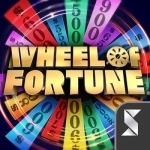
Wheel of Fortune: TV Game Show
Games and Entertainment
App
Have you ever wanted to buy a vowel? Spin the Wheel with Pat Sajak? Guess letters and watch them...

UrbanCoach Soccer Lite
Sports and Health & Fitness
App
UrbanCoach is the ultimate soccer coaching application. Manage everything about your teams. Track...
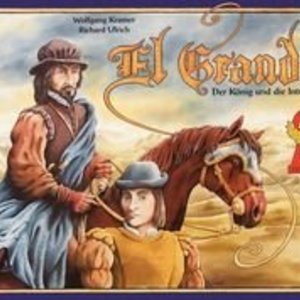
El Grande
Tabletop Game
In this award-winning game, players take on the roles of Grandes in medieval Spain. The king's power...
BoardGames

Bus
Tabletop Game
Prior to Essen 1999, a group of students created Splotter Spellen to sell some of their own game...
BoardGames PickUp& DeliverGames
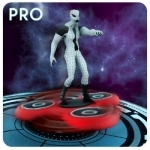
Fidget Spinner Hover Board: Mutant Rider - Pro
Games and Entertainment
App
Are you a fan of fidget spinner games? We bring you an innovative combination of fidget spinner...

Preschool and Kindergarten Learning Games
Education and Games
App
15 interactive educational games that will keep your preschool and kindergarten age kids entertained...

GOD Bible Adventure - The Amazing Bible Trivia Game that telling the Greatest Stories ever told!
Games and Entertainment
App
GOD, the most powerful switch and match mobile app Bible Puzzle Adventure game ever created. Take...
